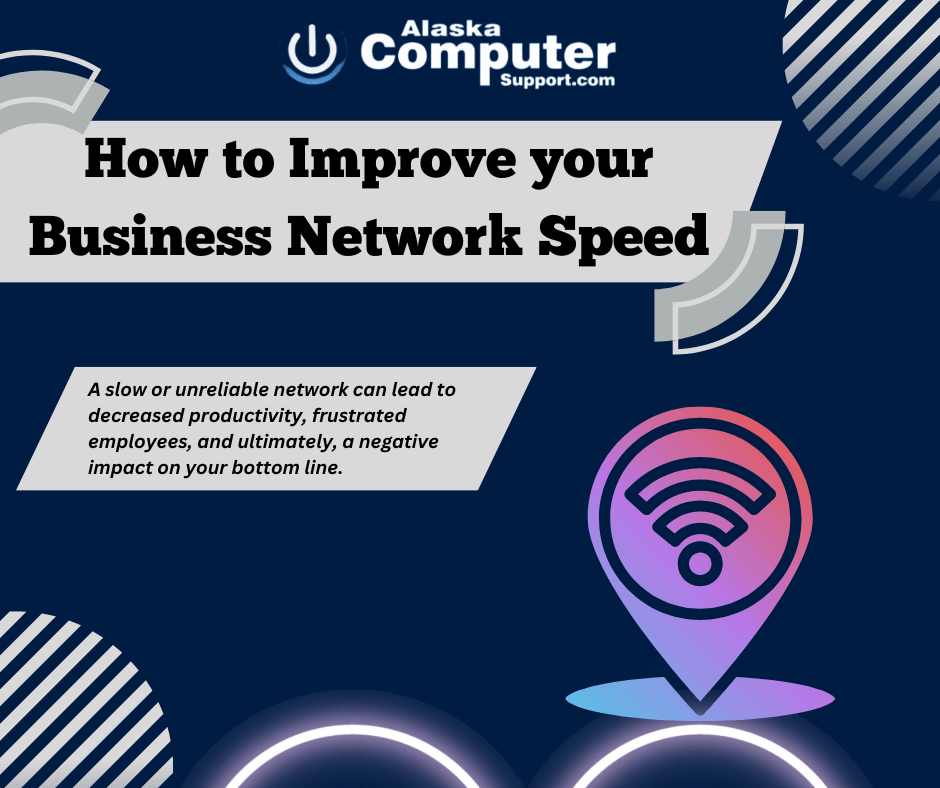How to Improve Your Business Network Speed

Introduction
Welcome to our comprehensive guide on improving your business’ network speed. In today’s fast-paced digital landscape, having a reliable and efficient network is crucial for businesses of all sizes. A slow or unreliable network can lead to decreased productivity, frustrated employees, and ultimately, a negative impact on your bottom line. In this blog post, we will explore various strategies and techniques to enhance your network speed, ensuring smooth operations and optimal performance.
Assess Your Current Network Performance
Before diving into network improvements, it’s essential to assess your current network performance. This step will help you understand the baseline network speed and identify potential bottlenecks that may be hindering your network’s performance. By conducting a thorough assessment, you’ll gain valuable insights into areas that need improvement.
To determine your baseline network speed, you can utilize various tools and methods designed for this purpose. These tools measure important metrics such as upload and download speeds, latency, and packet loss. They provide a quantitative understanding of your network’s performance. Once you have the results, it’s crucial to interpret them correctly and identify potential bottlenecks, such as outdated hardware or configuration issues.
Identify and Resolve Network Bottlenecks
To improve your network speed, it’s vital to identify and address any existing bottlenecks. This section will guide you through the process of analyzing your network infrastructure and optimizing the network configuration.
Start by assessing your network infrastructure, including hardware and equipment. Evaluate the age, capacity, and performance of your routers, switches, and cables. Outdated or faulty components can significantly hinder network speed. Identify areas where upgrades or replacements are necessary to improve performance.
Next, review your network settings and protocols. Are they optimized for your business needs? Identify any configuration issues that may impact network speed, such as incorrect bandwidth allocation or suboptimal routing settings. Resolving these configuration issues can have a significant impact on network performance.
Upgrade Your Internet Connection
If your current internet connection is unable to meet the demands of your business, it’s time to consider upgrading. Evaluating your current internet service is crucial in determining whether it aligns with your bandwidth requirements.
Start by assessing the specific bandwidth needs of your business. Consider factors such as the number of employees, the volume of data transfers, and the types of applications used. This analysis will help you determine the appropriate bandwidth for your operations.
Research available internet service providers (ISPs) and their plans to find options that offer faster speeds and better reliability. Consider alternatives such as fiber optic connections, which provide high-speed and low-latency connections. Additionally, explore options for cable or DSL upgrades that can offer improved performance compared to your current connection.
Implement Network Traffic Management
Network traffic management plays a crucial role in optimizing network speed and ensuring the smooth operation of critical applications and services. This section will explore two key aspects of network traffic management: prioritizing network traffic and limiting bandwidth usage.
Identify critical applications and services in your business that require uninterrupted and fast connections. By prioritizing their network traffic, you can allocate resources accordingly, ensuring optimal performance for these vital functions. Configure Quality of Service (QoS) settings to assign priority levels based on application or service importance.
In addition to prioritizing traffic, implementing bandwidth caps or limits can help prevent bandwidth-intensive applications from monopolizing network resources. By setting appropriate limits, you can ensure a fair distribution of bandwidth across different users and applications. Consider using traffic shaping techniques to manage bandwidth allocation more effectively and avoid congestion.
Optimize Network Security
Network security is not only crucial for protecting your business from cyber threats but also for maintaining optimal network speed. In this section, we’ll discuss how to review and update security measures while minimizing the impact on network performance.
A. Prioritize network traffic
In order to optimize your business’ network speed, it is essential to prioritize network traffic. By identifying critical applications and services, you can ensure that they receive the necessary resources and bandwidth for seamless operation.
Start by identifying the applications and services that are vital to your business operations. These may include real-time collaboration tools, VoIP systems, or cloud-based applications. Understanding their importance will help you allocate resources accordingly.
Configure Quality of Service (QoS) settings to prioritize specific types of network traffic. QoS allows you to assign priority levels to different types of traffic based on their importance. For example, you can prioritize voice or video traffic over less critical data transfers. This ensures that crucial applications receive the necessary bandwidth and are not hindered by non-essential traffic.
B. Limit bandwidth usage
Managing bandwidth usage is another crucial aspect of network traffic management. By implementing bandwidth caps or limits, you can prevent certain applications or users from consuming excessive bandwidth and negatively impacting network speed for others.
Implementing bandwidth caps involves setting specific limits on the amount of bandwidth allocated to individual users, departments, or applications. This ensures fair distribution of resources and prevents bandwidth-intensive activities from overwhelming the network. It allows you to prioritize critical functions while avoiding congestion and slowdowns caused by non-essential activities.
Traffic shaping techniques can also be employed to optimize bandwidth usage. With traffic shaping, you can control the flow of network traffic by enforcing specific rules and policies. This enables you to allocate bandwidth dynamically based on real-time demands and business priorities. By shaping traffic, you can optimize network performance and ensure that critical applications receive the necessary resources.
